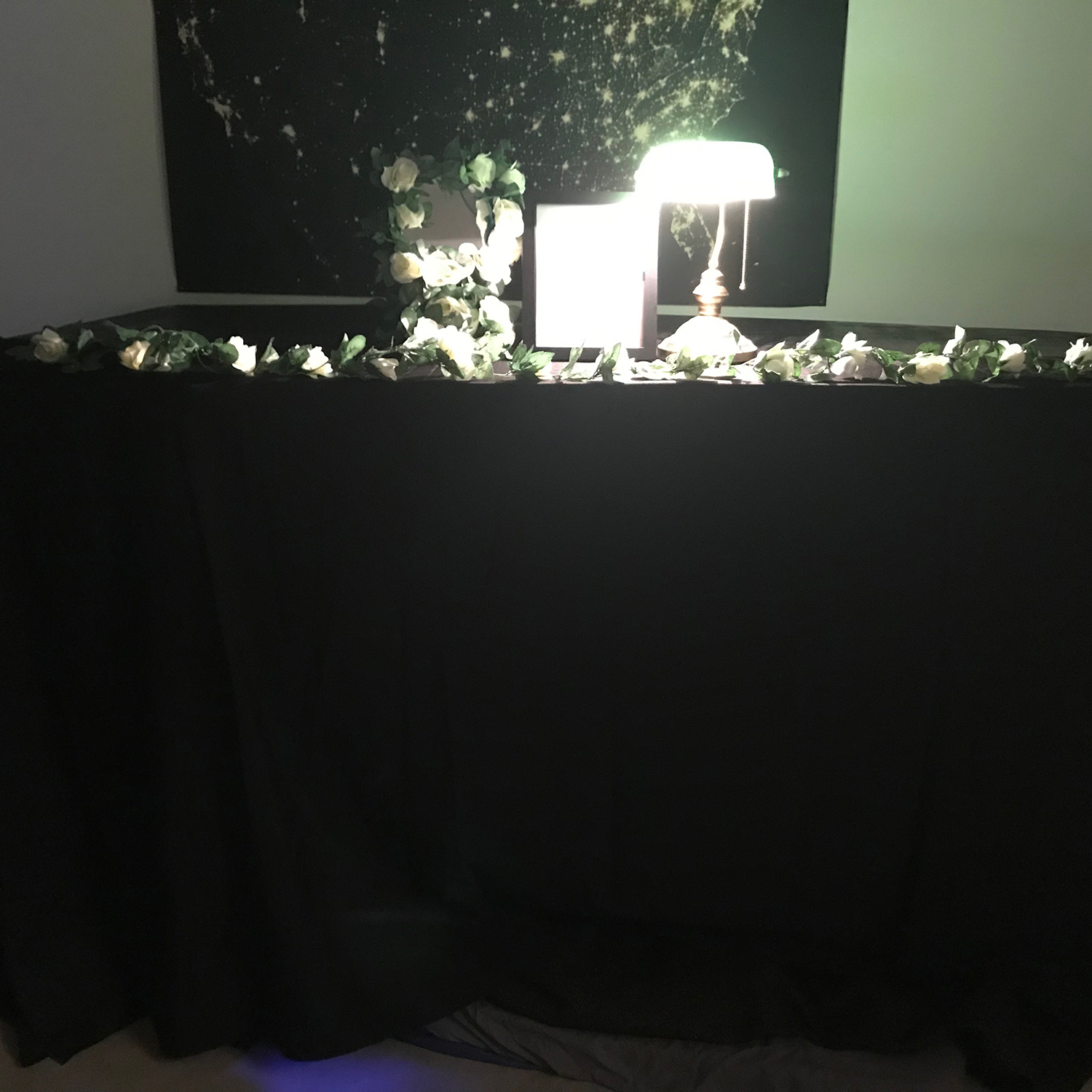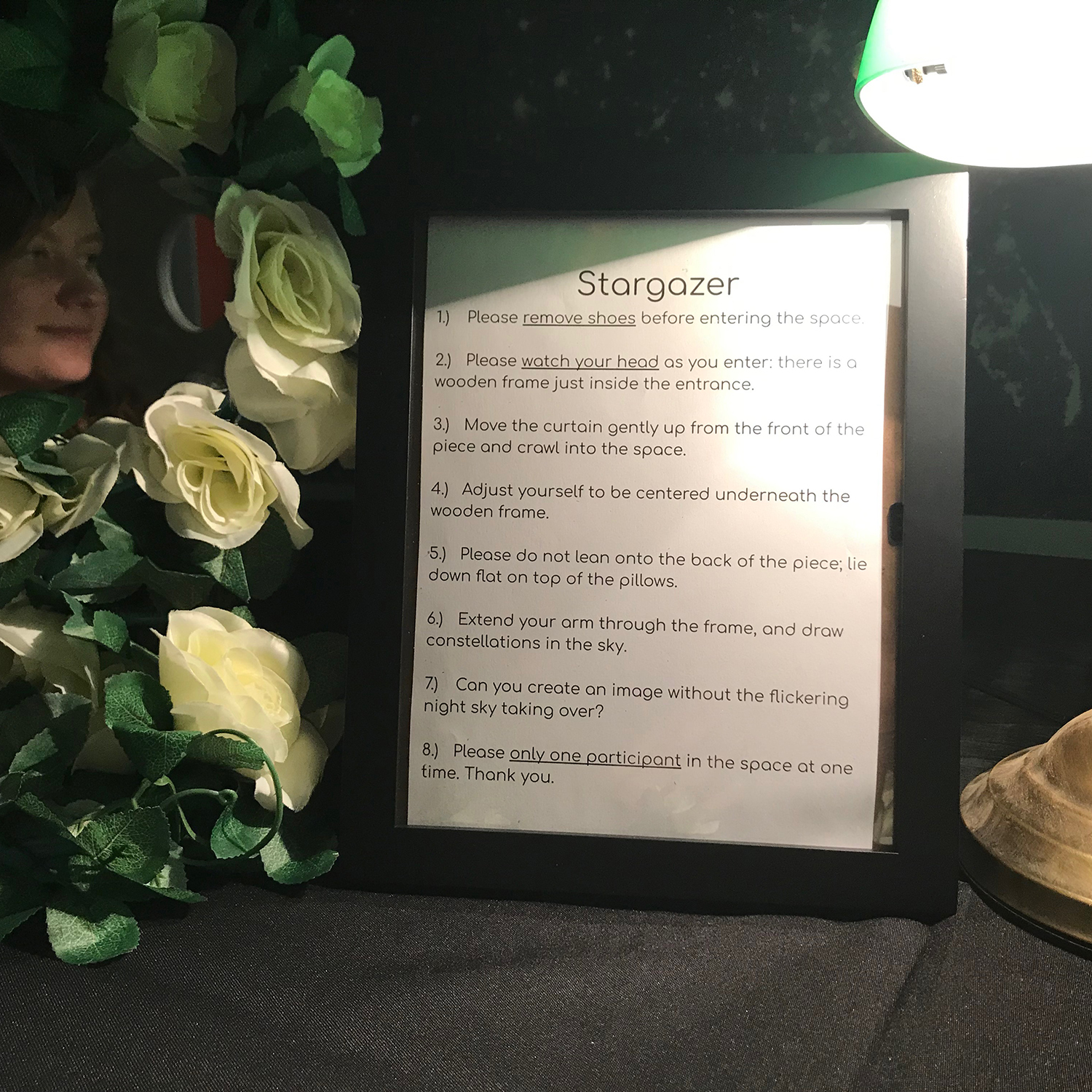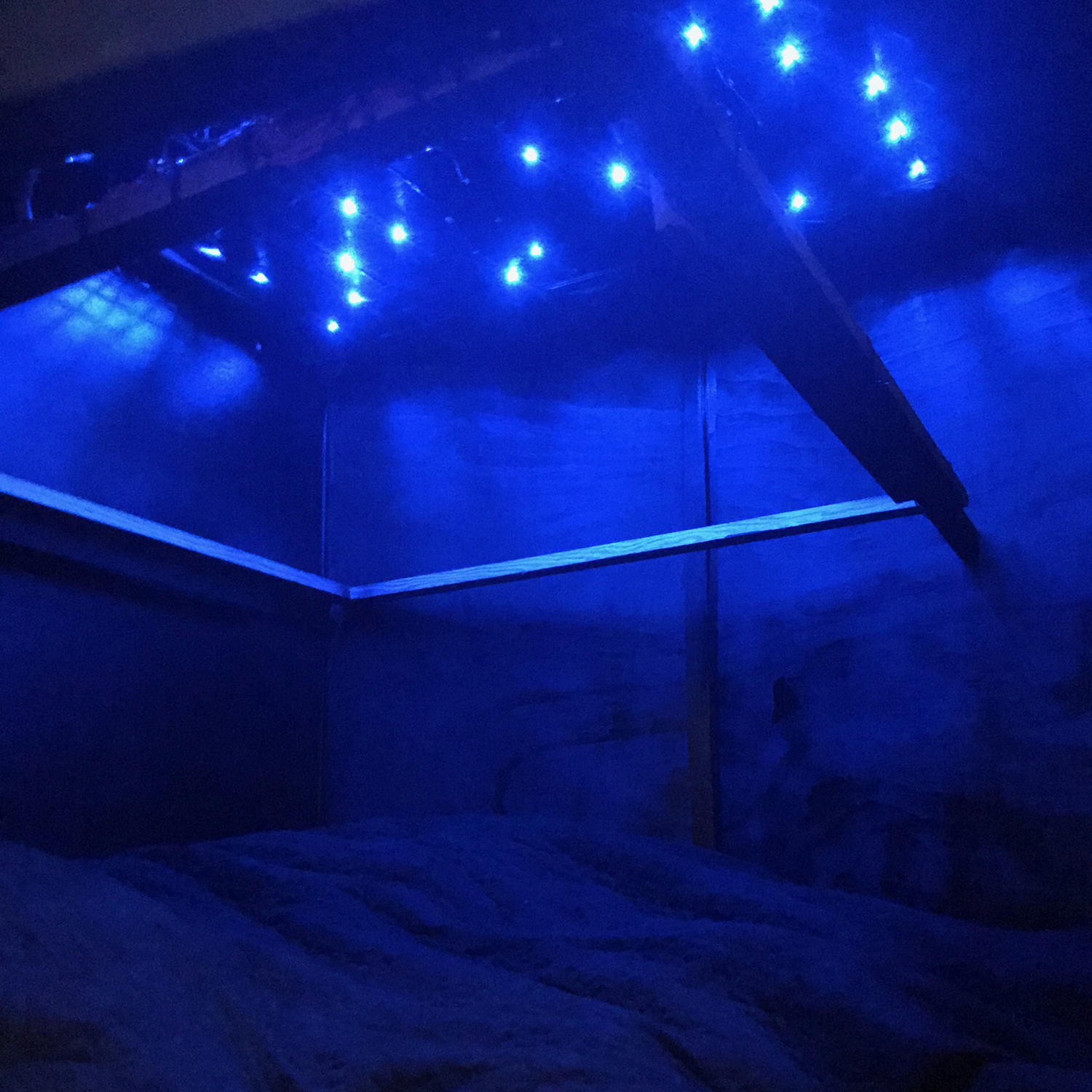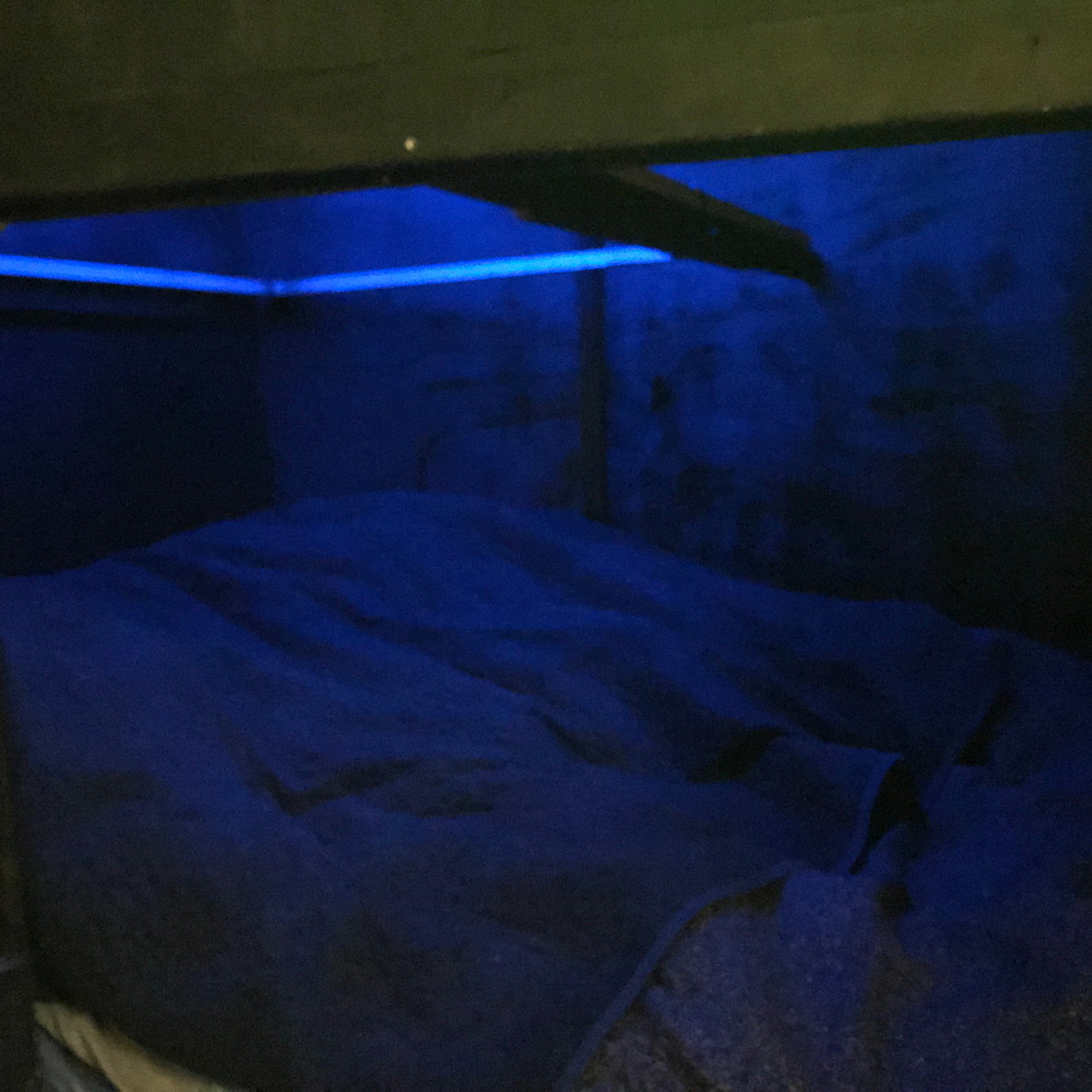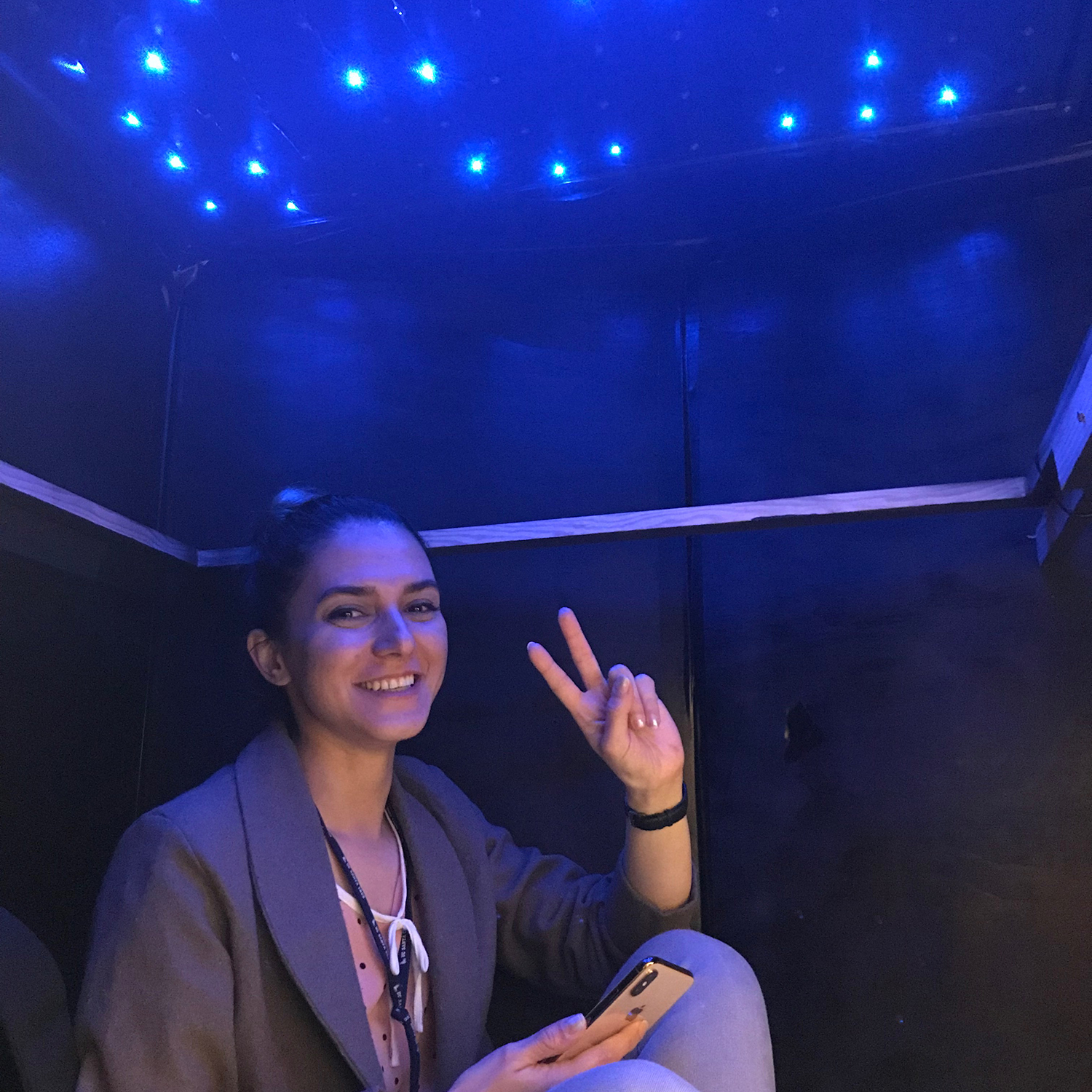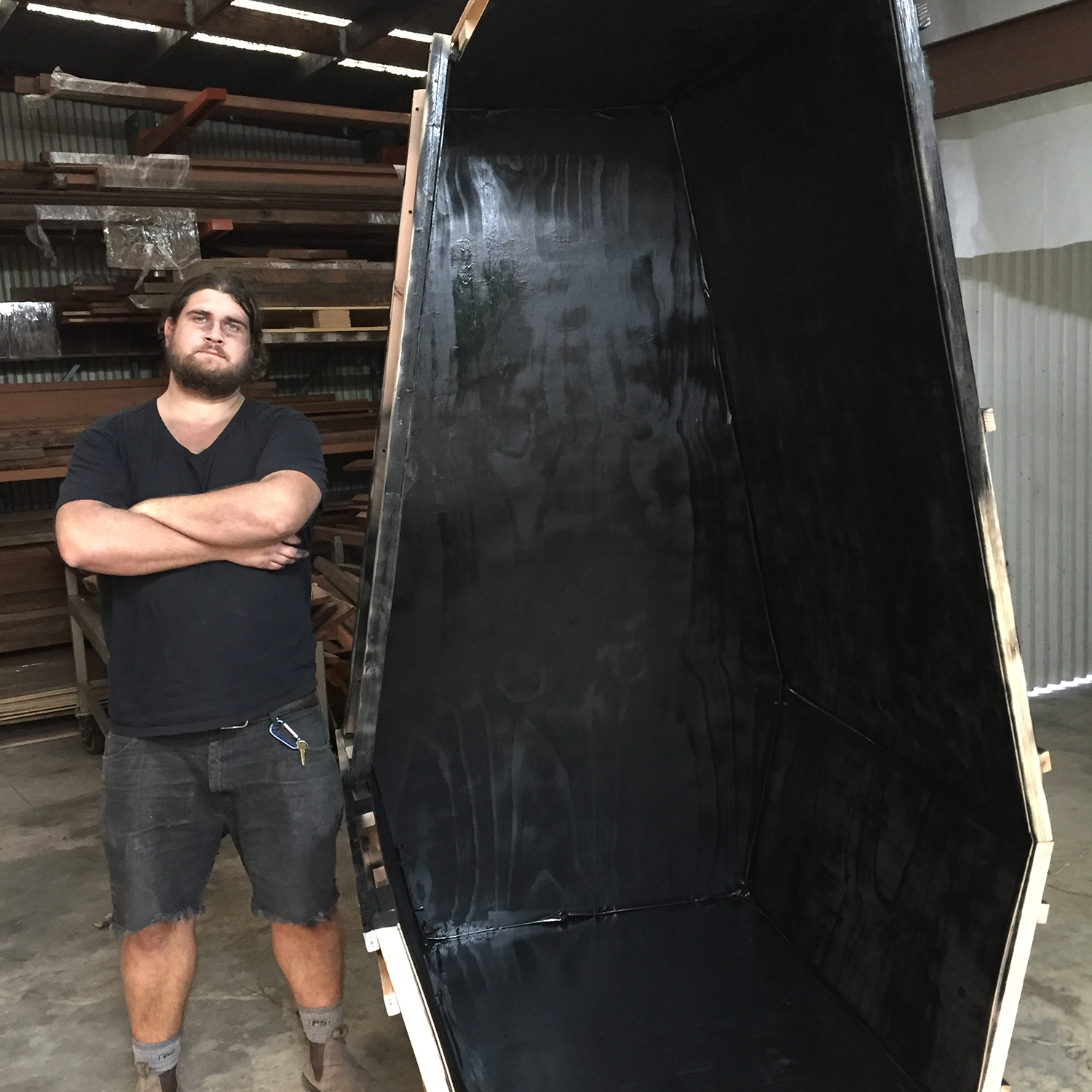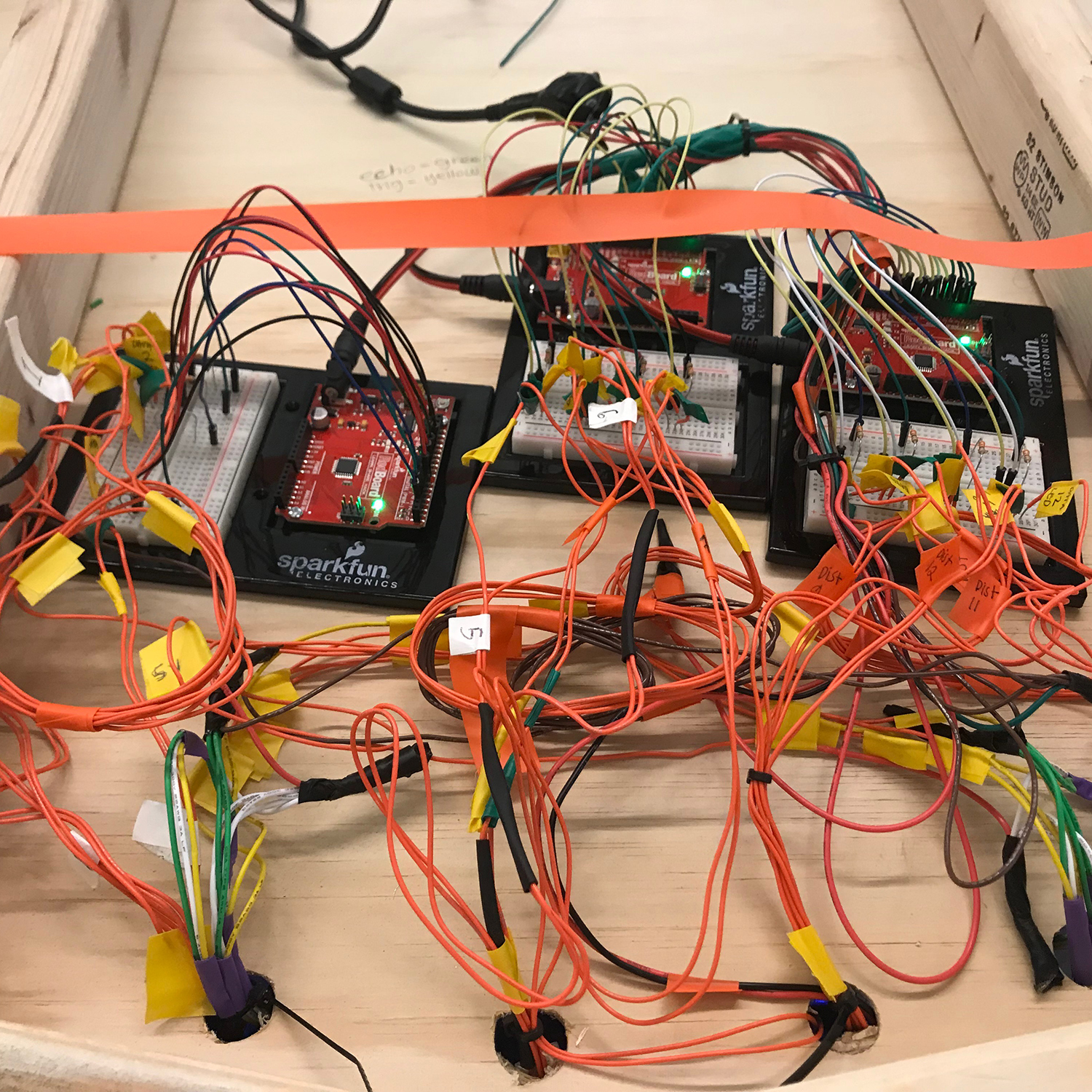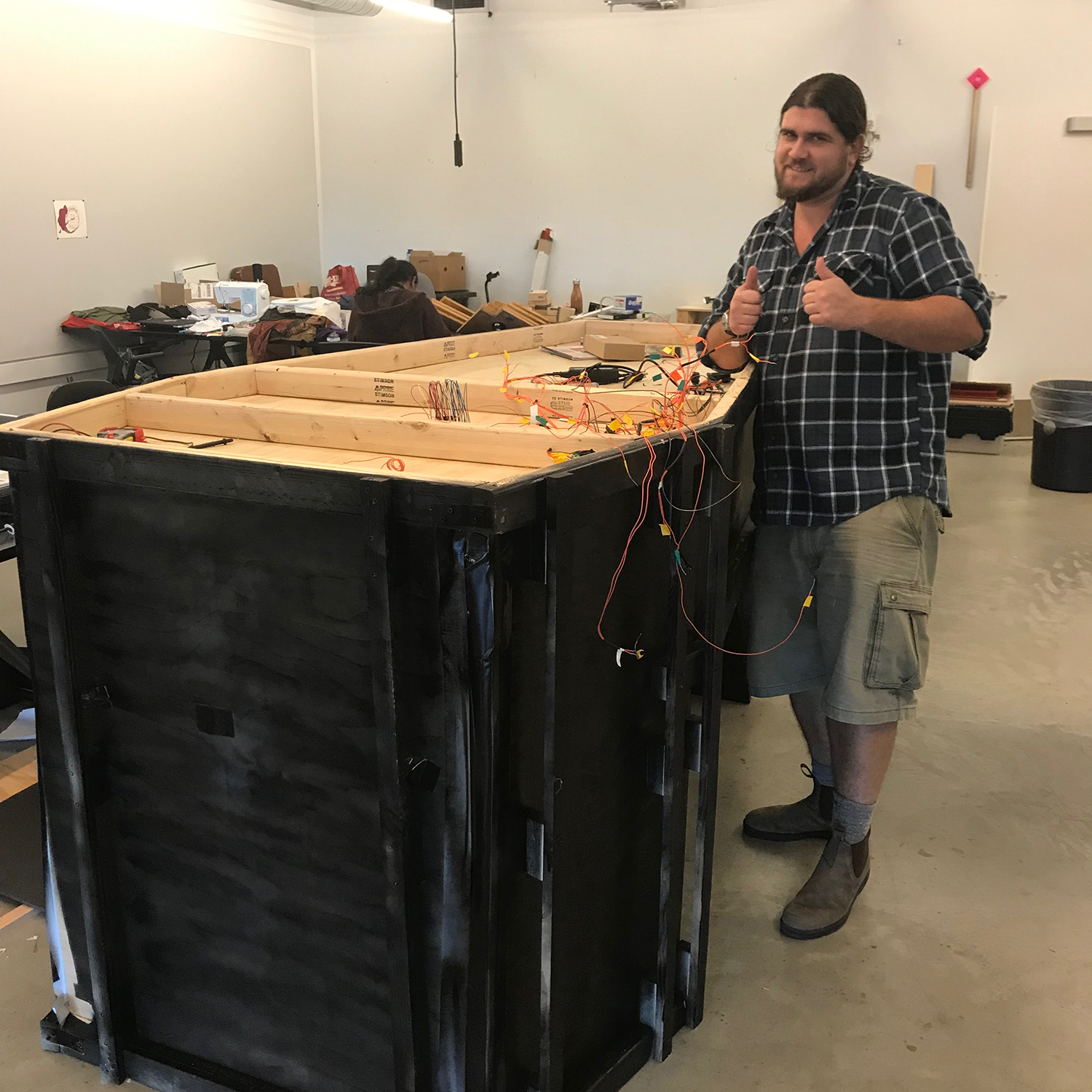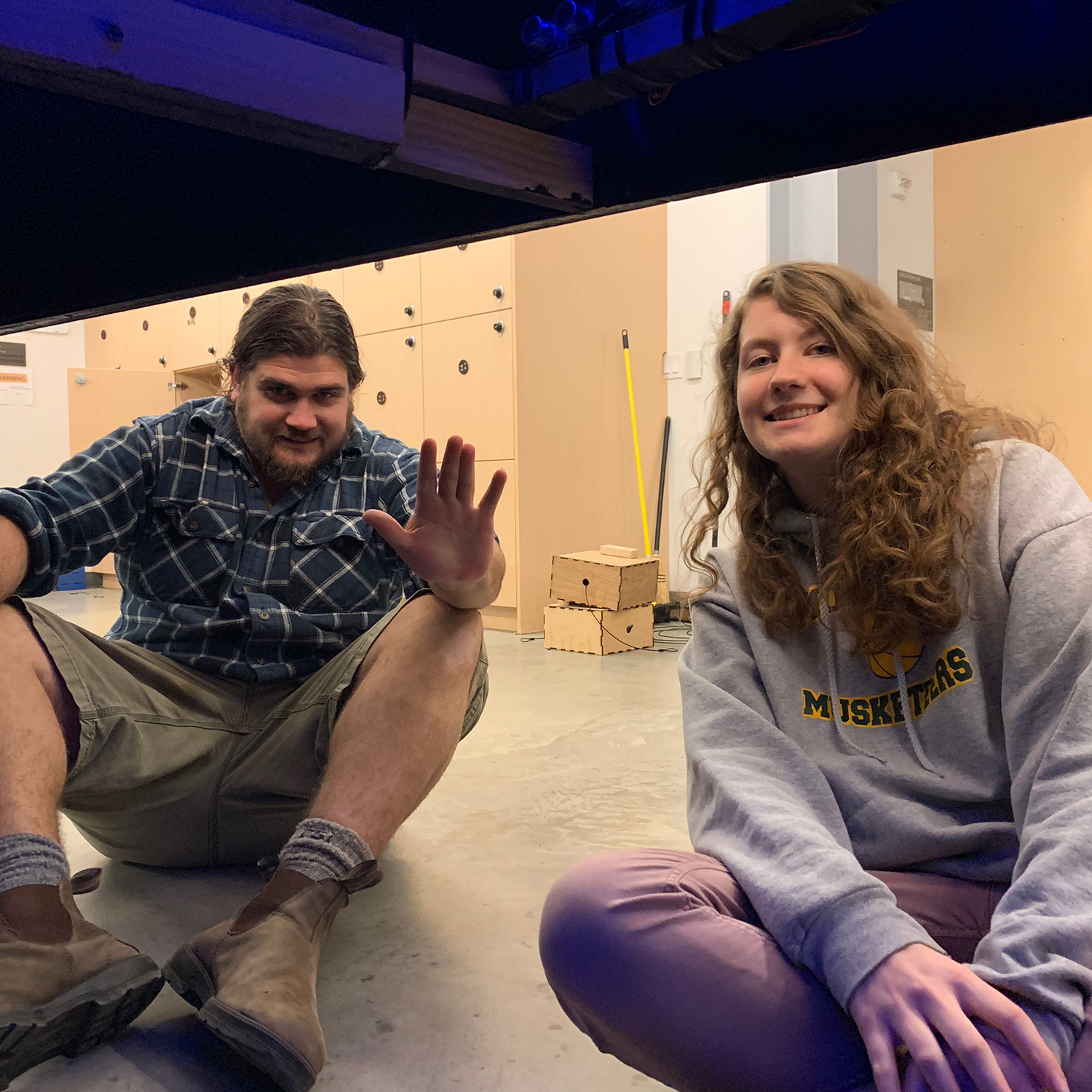Stargazer
What is your real impact on the future? After death, will you be remembered? What happens to the traces we leave behind? Do we leave traces behind? Is all the darkness?
What Is Stargazer?
-A space for solemn contemplation -An open-ended question -An interactive experience -An exploration of the limits of human the agency, in life and in death
Materials:
-Around a thousand hand-soldered connections -An approx. 7x4x4 wooden box. Primarily a thin plywood skin, and relevant 1x3s and furring strips. -Black Spray-paint, Electrical Tape, and Hot glue. -12 ultrasonic distance sensors -120 LEDs (off-brand neopixel breakouts) in a 12×10 grid 3 inches apart -275 feet of wire -a 10 amp 5v power supply -Screws -Mirror w/ flowers -Picture frame & Explanation -Pillows & blankets -3 Arduino Unos -A Window Screen and Relevant Accoutrements -Some groovy code -Echoes
Our Vision
The interior ceiling of the coffin is a night sky of sorts. By reclining in your coffin, and reaching above your head, you can trigger LEDs on or off by having distance sensors read the distance between themselves and your hand using echolocation. In doing so, you can draw and erase the constellations of stars. At the same time, you must fight the randomness and change caused by the echoes that resound in the space without your effort or consent.
Trials and Tribulations
-We failed in using a multimeter and destroyed our first power supply in the process
-Time management soldering vs. coding
-Needed to be more precise in our measurements for wire, and more careful in wrapping wires. Heat shrink is messier than just using electrical tape.
-Biggest issue. Putting twelve speakers and mics inside of a wooden box…there’s just a lot of noise. The values that return when there is no hand in the way are pretty random (although more heavily weighted towards our end values).

